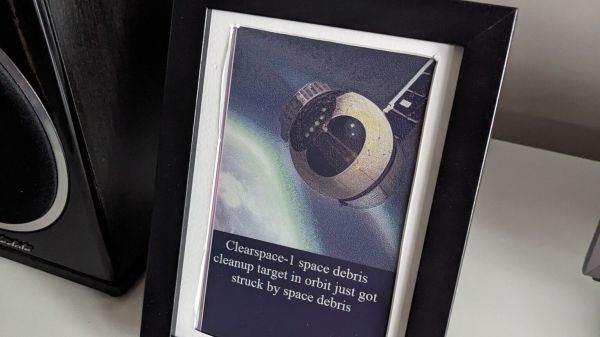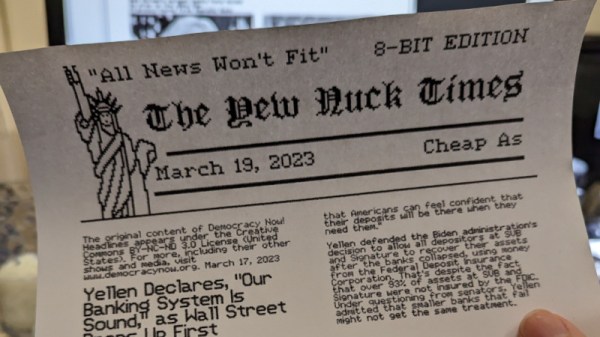Your phone or laptop will give you access to the vast majority of news in the world, in languages you can read and a few hundred you can’t. Maybe you only like one news source, though, and that news source happens to be Canadian Broadcasting Corporation (CBC). If that’s the case, you might like to give this project a look from [Ron Grimes].
[Ron] built a device that does one thing and one thing only: it displays news stories from CBC. It’s built around a Raspberry Pi 2, and the project began when he wanted to interface a keypad just to see if he could. With that done, the next challenge was to integrate a 16×2 character LCD display of the HD44780 persuasion. With those two tasks completed, the question was simple — what to display? He figured tuning into the CBC news feed would be useful, and the Chocolate Box News Reader was born.
The device displays 29 news feeds in total, including the main top stories, world news, and Canadian regional news. It stores 15 news items per feed and will hang on to those stories even if the Internet drops. The reader will display the whole stash of stored news in around 90 minutes or so, and each stored item comes with more information if something strike’s [Ron’s] curiosity or interest. Files are on GitHub for the curious.
It’s a neat build, and we can imagine it being a smart item to have kicking around the house. It was also a great way for [Ron] to build on his familiarity with the Raspberry Pi, too. Meanwhile, if you’ve got your own nifty Pi-based projects—or others!—don’t hesitate to drop us a line!


















